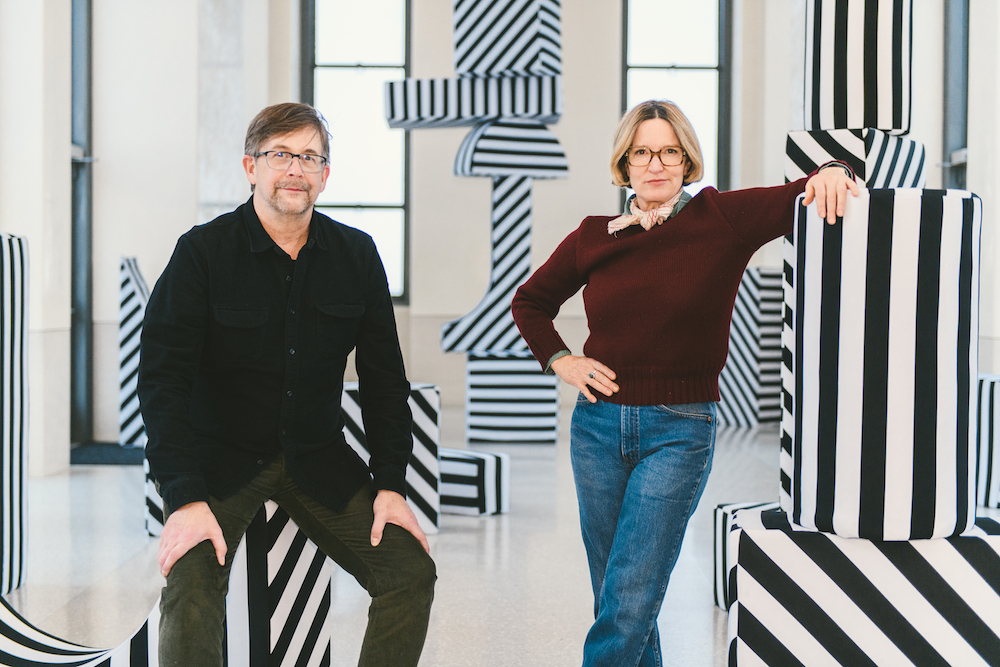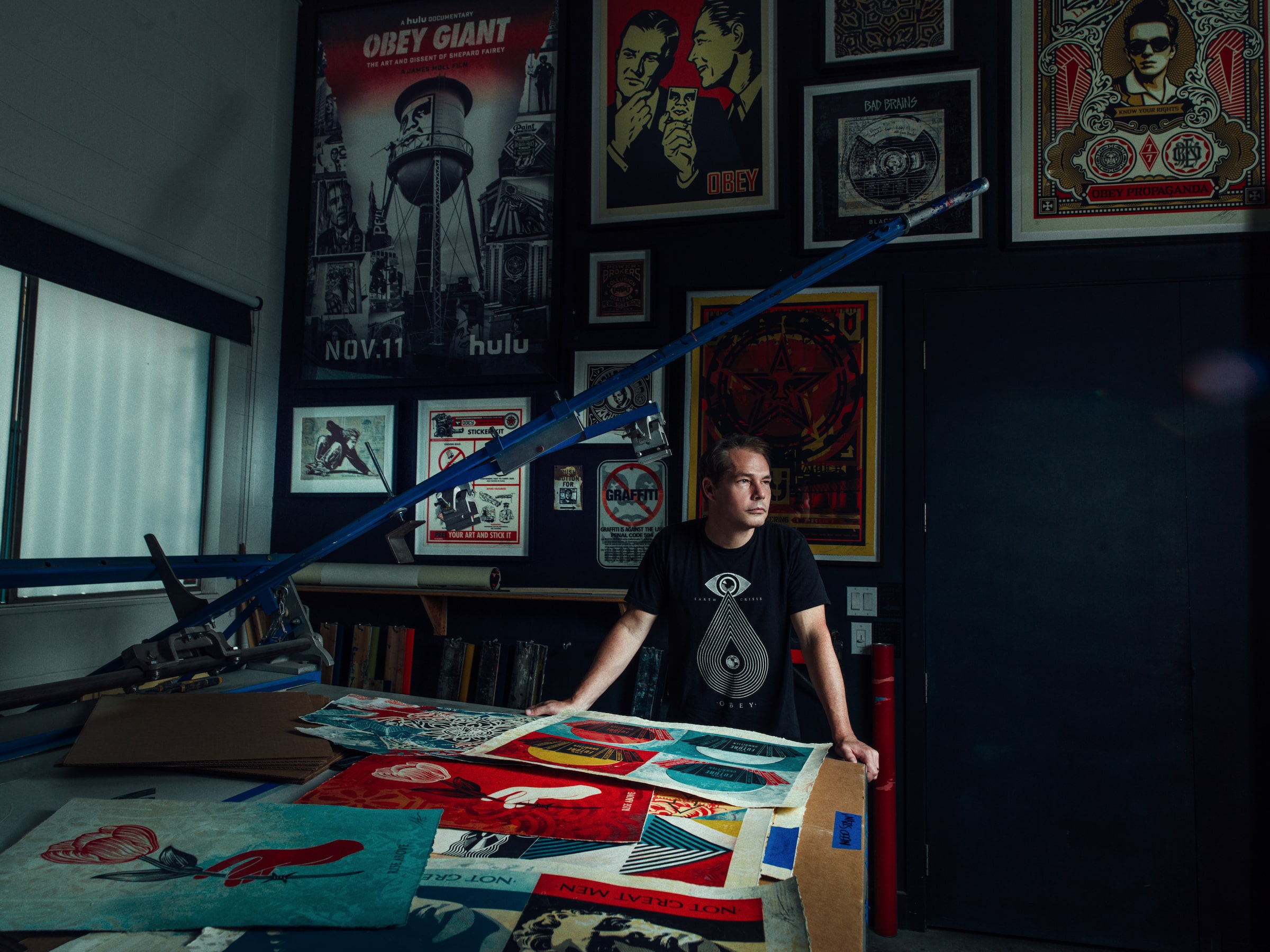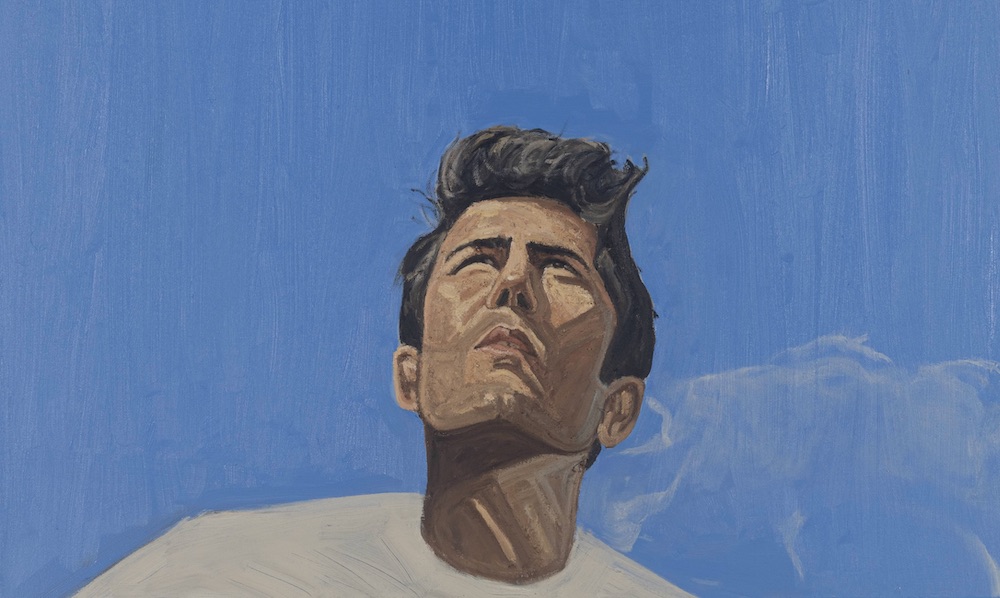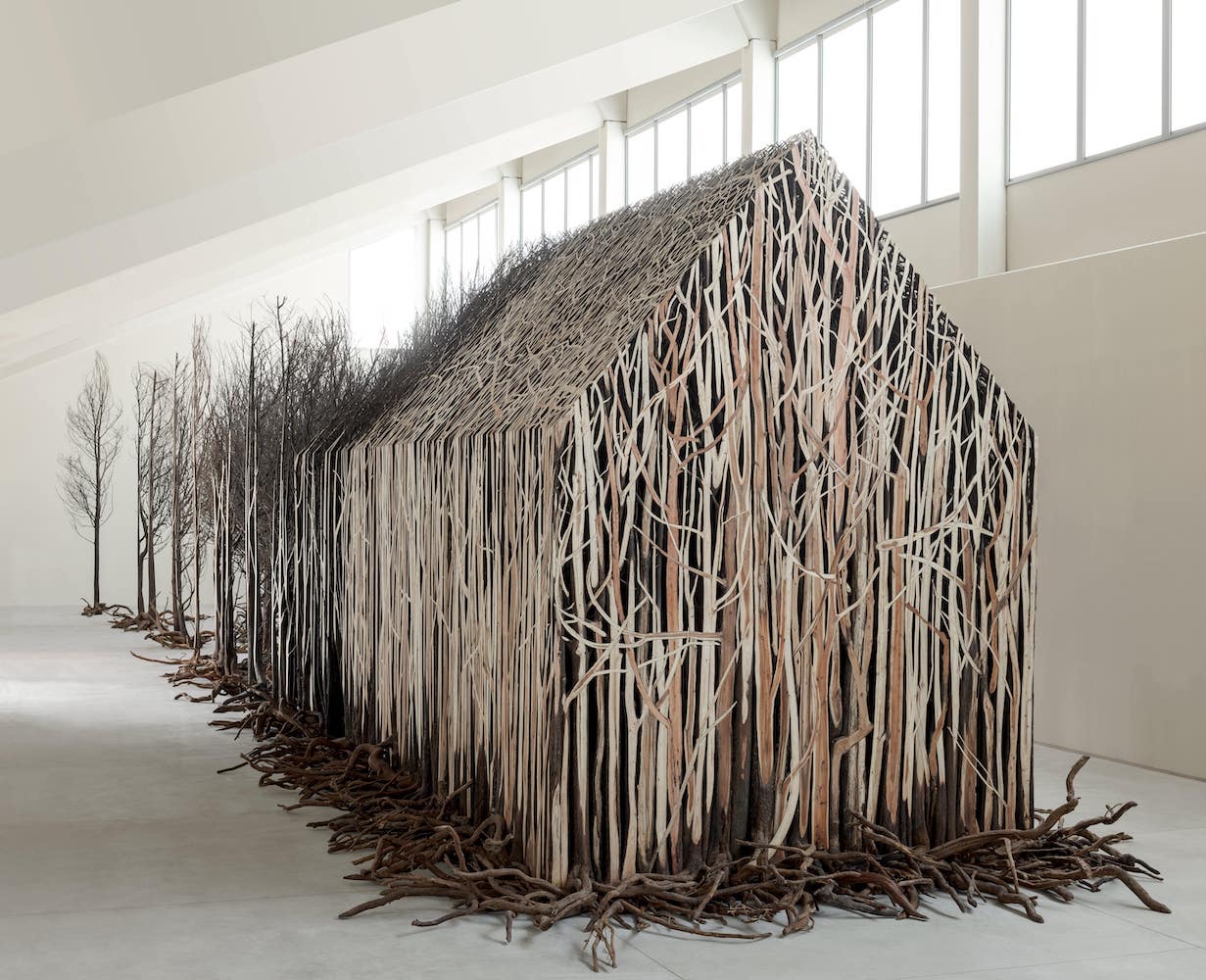Now on view at the Top of the Rock through March 13 is an exhibition entitled “Buildings and Blocks” by Kris Moran and Martin Duffy. Inspired by the skyline and shapes of New York City as viewed from the observation deck, the unforgettable installation features three 23-foot towers and 37 black-and-white striped spheres that resemble building blocks for kids.
Open to the public at no charge, the special 67th-floor space is adorned in simple, familiar design objects to transport us back to the moments of our childhood that have brought us joy. Whitewall spoke with Moran and Duffy about creating a presentation that challenges perception, balances simplicity and sophistication, and sparks playful emotion.
WHITEWALL: What was the starting point for “BUILDINGS AND BLOCKS”?
KRIS MORAN & MARTIN DUFFY: The top floors of Rockefeller Center provide 360° views of Manhattan in a beautiful art deco setting. The space is a clean jewel box so we wanted to honor it and its vistas by offering a challenging yet complimentary experience for those looking outward. Our idea of ‘building blocks’ is a reflection of the city below. Everything one views from the terraces can be distilled down to these simple shapes. New York City’s architecture and urban planning all start with the fundamentals; squares, triangles, cylinders, wedges, columns, rectangles, and lines.
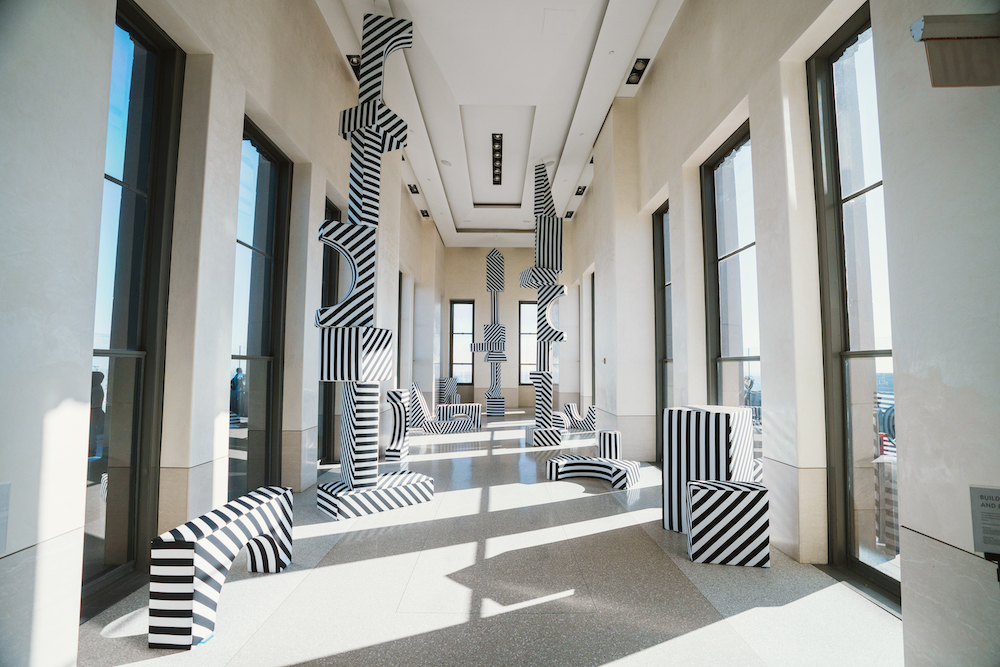
Installation of “Building and Block,” courtesy of Rockefeller Center.
WW: The installation on the 67th floor features three 23-foot towers, and 37 black and white-striped pieces resembling children’s building blocks. Do you hope these objects will transport us back to our childhood?
KM & MD: Our idea is to evoke an emotion or feeling, maybe of childhood or maybe just a sense of playfulness. To create intrigue framed in familiarity. This installation location within the Top of the Rock is where visitors may rest or reset. Our piece can be interactive—beckoning play or it could be passive by providing a comfortable backdrop. Unlike a museum or gallery setting, we invite participation—each day the room looks different as pieces are constantly being rearranged.
WW: What was your childhood like? Which objects back then brought you joy that could similarly be
compared to these in the show?
KM & MD: The most basic objects resonate with us. We look back at simple building blocks, Colorforms, Lincoln logs, pencil and paper, Legos, etc. that allowed our imaginations to flow. These types of toys are gateways to self-made stories. They are invitations to play and invent.
WW: Why do you feel this installation is important for New York right now?
KM & MD: There are few other times that suggesting “joy” and “play” are seriously needed. NY, as in many
other places, was hit hard by the Covid pandemic. If our installation provides just a sliver of joy,
we’ve accomplished what we set out to do.
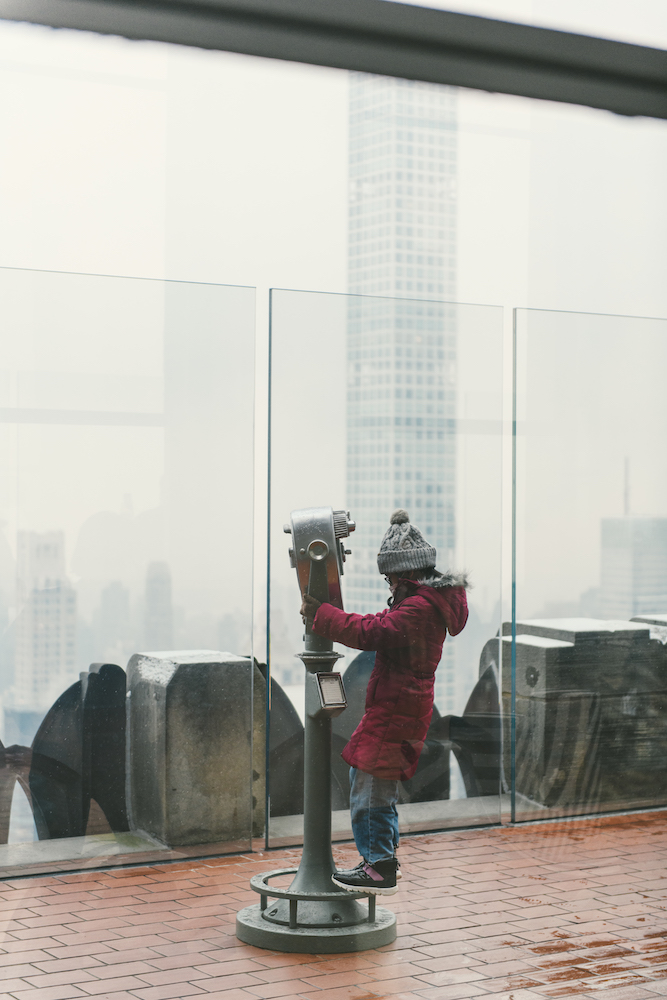
Courtesy of Rockefeller Center.
WW: Martin, as a creative director, you challenge perception with creativity and unordinary details. How did you envision this project to be received by the public, playing with perception and detail?
MD: Working mostly in two-dimensional design, I’m tasked with creating and providing depth—this might be experiential or emotional. In simplifying our approach to this project by paring down to the basics – geometric shapes, divergent stripes, and just black and white—I was able to translate a graphic sensibility to our three-dimensional pieces in order to create a vibrant, almost kinetic energy.
WW: Kris, in your work as an artist, event designer, and set decorator, you’ve focused on the balance of simplicity and sophistication. How do you typically approach a project to ensure this balance is achieved?
KM: My experience is in setting a stage, or—in the case of my film work—a set. How the furnishings, objects or color supports the story. Events and spaces are no different. Consideration to who is in the space, what brought them to the space, and how this setting connects to their emotions. This installation in Rockefeller Center is like a stage that invites the viewers to become participating characters—walking through, sitting, moving, or interacting with the pieces.
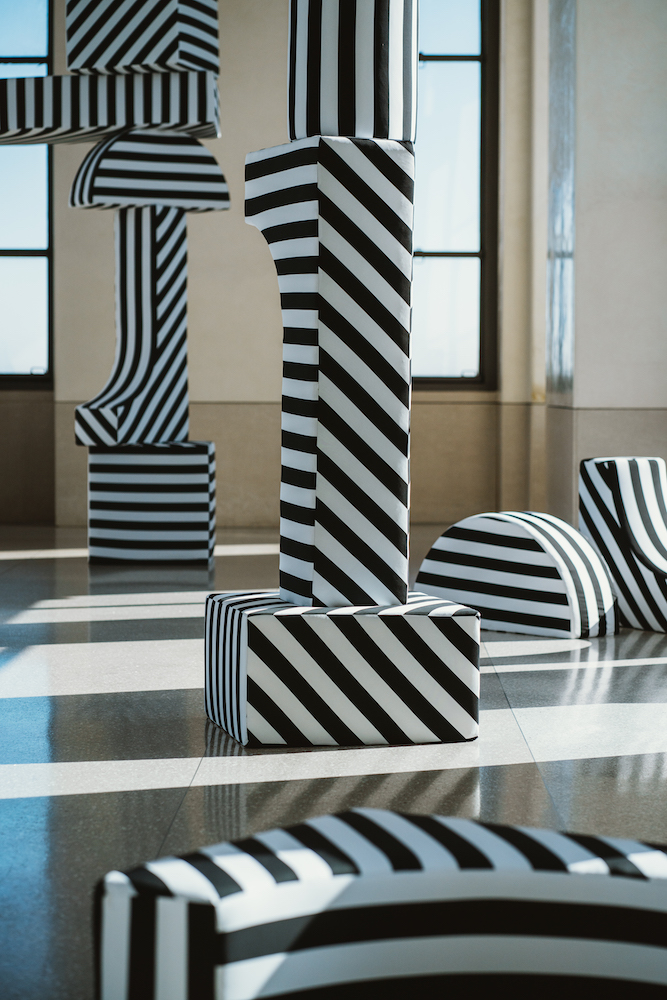
Installation of “Building and Block,” courtesy of Rockefeller Center.
WW: What are each of your personal homes like? Any art or design object of note?
MD: Our homes are similar in that they are collections of our experiences. While the art and design in my home lean towards the graphic (Geoff Mcfetridge, Martha Rich, Jim Houser, printed ephemera) and the found (Scandinavian furniture, green Hoosier glass). Kris gave me a carved self-portrait many many years ago—it sits atop my piano.
KM: My home is eclectic 20th-century furniture from various countries. I tend to like to keep my walls sparse—and choose functional small pieces that interest me as my art objects, canisters, kitchen utensils, bookends, and I have a six-foot pencil from the 1980s Think Big store in NYC that continues to make me smile.
WW: How do you perceive the importance of space, especially now during a pandemic, and when
isolation is present?
KM & MD: Having been working this way for the past 2 years, we’ve adapted to partnering in solitude. Isolation has allowed us to explore more, maybe practice a craft, or investigate new mediums. This project started over Zoom. We collaborated in the earliest stages that same way. Generating ideas alone but also via FaceTimes and phone calls. The process was made more gratifying when we were able to work in person with our vendors, fabricators, installers, and each other.
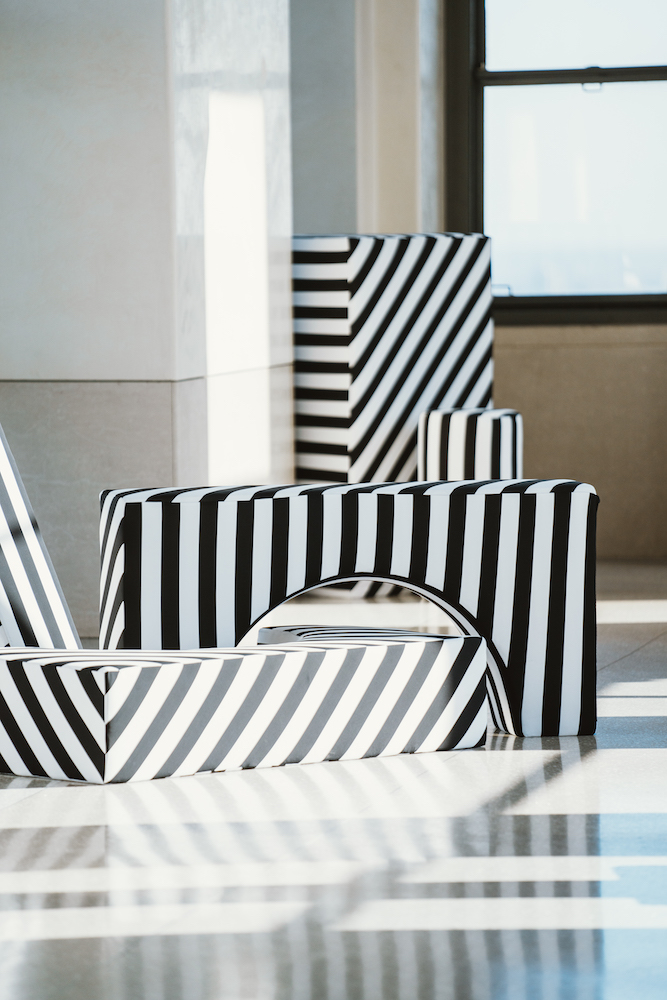
Installation of “Building and Block,” courtesy of Rockefeller Center.
WW: What are you working on this year?
KM & MD: In addition to a few special event-based installations, we are continuing with our “Buildings and Blocks” direction—we are developing furniture and furnishings, prototypes in progress, as well as unstructured soft sculptures. We are looking into European and North American Design fairs.



